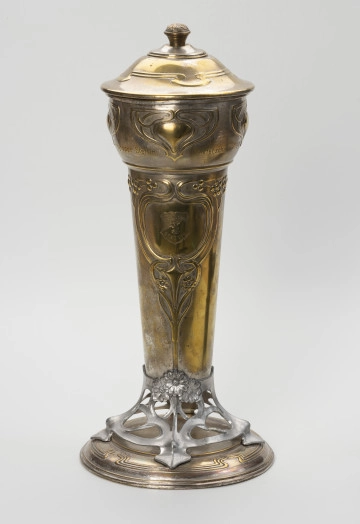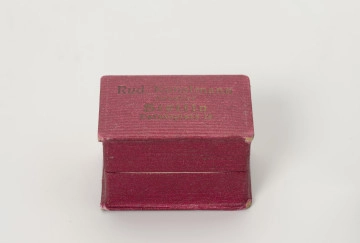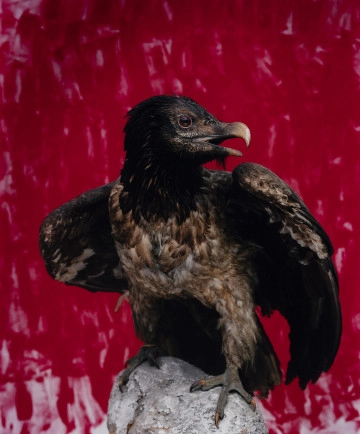
S.C. Blücher Stettin sports club cup
not after 1910
National Museum in Szczecin
Part of the collection: Goldsmith craftsmanship
Nautilus was the name given to a decorative cup made from the shell of a chambered nautilus (Nautilus Pompilius), a cephalopod of the family Nautilidae, caught in the warm waters of the western Pacific and Indian Oceans. After sanding, the surface of the spirally twisted conchs had a pearlescent hue and a slightly iridescent sheen. In the modern period, these shells were brought to Europe first by the Portuguese and, from the 17th century onwards, primarily by merchants of the Dutch East India Company, founded in 1602, which soon dominated the East Asian trade. They were highly valued by collectors. Placed in elaborate silver settings, they combined the qualities of naturalia – rare creations of nature – and artificialia – elaborate man-made works. Like goblets made of other exotic materials – ostrich eggs, coconuts or coral – they were a frequent decoration of kunstkamer, Renaissance and Baroque art cabinets that gathered collections of unusual and precious objects.
The goblet on display was made after the mid-17th century by the Lübeck goldsmith Michel Winter (16..-1669). The softly modelled surface of the foot and the pear-shaped nodus are decorated with motifs of single flowers, including carnations and tulips, referring in style to the botanical atlases popular at the time.
Monika Frankowska-Makała
Author / creator
Object type
goblet
Technique
forging, repoussage, casting, engraving, fine detail finishing, gilding
Material
shell, silver
Origin / acquisition method
purchase
Creation time / dating
Creation / finding place
Owner
Muzeum Narodowe w Szczecinie
Identification number
Location / status

not after 1910
National Museum in Szczecin

1903 — 1934
National Museum in Szczecin

2018
National Museum in Szczecin
DISCOVER this TOPIC
Museum of King Jan III's Palace at Wilanów
DISCOVER this PATH
Educational path